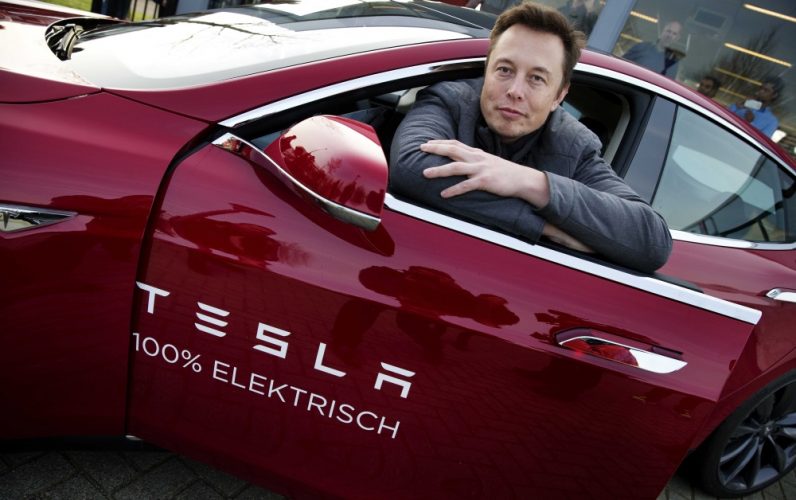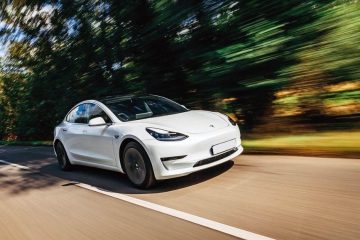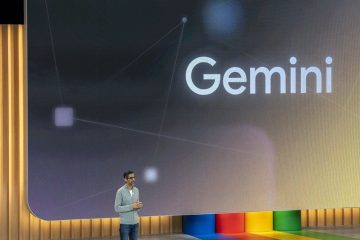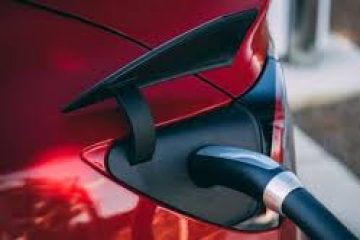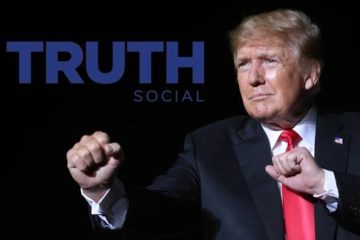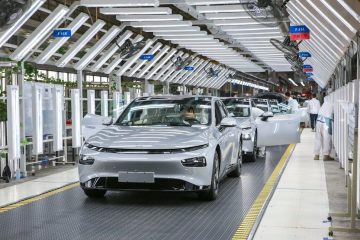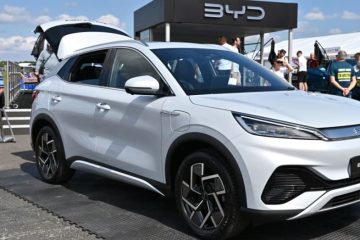Elon Musk has long been an enthusiastic advocate of controversial pro-forma accounting. Recently, Tesla’s founder and CEO introduced a creative new cash flow metric that’s supposed to present a truer picture of the electric automaker’s finances than do the official numbers.
Memo to investors: Musk wants you to count cash that Tesla collected up-front, but may not fully keep, as a sure thing.
Understanding Tesla’s TSLA cash flow performance is especially important right now. The company disclosed in a filing on August 31 that it will need to raise additional capital to support its proposed merger with home green energy provider SolarCity SCTY , where Musk also serves as chairman. The news is raising concerns that Tesla already is facing a cash crunch, so it’s crucial to assess whether Tesla really can count on collecting all the money that its pro-forma reporting claims.
Reading The Small Print
The innovative approach to cash flow isn’t entirely novel. Tesla regularly issues quarterly earnings releases that include long sections of alternative figures for revenues, profits, and earnings per share. Those adjusted numbers always present a far more positive picture of the company’s performance than do the official results under generally accepted accounting principles (GAAP). In one recent quarterly earnings announcement, for example, Musk unveiled pro-forma figures that lowered Tesla’s official loss almost a quarter by eliminating “stock-based compensation expense” from total costs. As Warren Buffett argues, equity options and restricted shares are a real cost—and correctly treated as such under GAAP—because they cause dilution by shrinking the share of earnings that go to existing shareholders.
It’s well known that Tesla is deploying gigantic amounts of capital to boost sales from a projected 50,000 vehicles this year to half-a-million in 2018. That’s arguably the most ambitious goal in corporate America. To make it happen, Musk has grown Tesla’s asset base from $ 1.3 billion at the end of 2013 to $ 11.9 billion by June 30, following a $ 1.7 billion equity raise in the second quarter. Now, Tesla will need to accelerate its capital-raising program to fund the SolarCity deal. (See: 5 Things We Just Learned About the Tesla-SolarCity Deal)
It’s absolutely typical for a startup racing to build new plants and R&D centers to burn a lot more cash than it generates. Investors and analysts are mostly optimistic, predicting that Tesla will in a few years exploit its heavy investment by generating big positive and fast-growing cash flows. Hence, it’s crucial to examine the arc of Tesla’s cash flows to project when, and if, it will become profitable.
As with its other pro-forma measures, Tesla’s version of cash from operations looks a lot better than the official numbers. So which is the right figure for investors? As it reported in its 10K for 2015, Tesla made a major concession to an important group of customers. The shift was aimed at strengthening a fast-growing business, sales of vehicles to banks that lease its model S and X vehicles to end-customers.
In the past, Tesla simply sold the autos to its leasing customers, with no strings attached. The banks had no right to get money back from Tesla if, for example, the market for used electric vehicles dropped, forcing them to sell at lower-than-expected prices when the leases ended. But starting in the fourth quarter of 2014, Tesla began providing “residual value guarantees” to those “leasing partners.”
Those guarantees state that when the lease expires, typically after three years, the bank has the option of selling the car back to Tesla at a fixed, pre-determined price. Or, if the lessor chooses to sell the cars on its own and receives less than the guarantee amount, Tesla must cover the shortfall. Of course, customers have the option of buying the Model S or Model X for a fixed price at the end of the lease period, and if a customer does keep the car, Tesla’s liability ends.
But if a customer decides not to buy, the bank can return the car to Tesla and pocket the guaranteed price, or sell the three-year old vehicle on the nascent green used car market. Either way, Tesla takes a big loss, and effectively returns a lot of the original “purchase” price, if rates for used S and X’s drop.
Under GAAP rules, the introduction of the residual value guarantees required a major change to Tesla’s accounting for revenue and cash flow. As always, Tesla receives cash for “the full purchase price of the vehicle” up-front, when it’s delivered. But instead of booking that amount immediately as revenue, as in the past, it’s now obliged classify the cash—the average sales price of a Tesla is $ 100,000—as “collateralized borrowing” on the liability side of its balance sheet. In other words, as a loan from the banks that do the leasing.
The loan is really an accounting device. Tesla doesn’t repay the principal. It recognizes revenue in fixed increments over the lease period, and in takes a big sales gain when, hopefully, the end-customer buys the car at the lease’s conclusion. Those revenues aren’t collected in cash. They’re simply accounting entries that reduce the collateralized borrowings on the balance sheet. The GAAP rules are saying that the “sale” isn’t really complete because Tesla is still responsible for losses if it’s forced to resell cars for less than what it paid the banks under the guarantees, or obligated to fund the shortfall on cars the banks sell themselves.
Pivot Point
Until the fourth quarter of 2015, Tesla had been guiding investors to “free cash flow” in its earnings releases, defined as “cash flow from operations plus capital expenditures.” Those numbers accurately portrayed how Tesla’s cash consumption far outstripped it cash generation. For the first nine months of 2015, Tesla reported a negative $ 1.7 billion, almost triple the deficit for the same period in 2014.
Then, starting in the fourth quarter, Musk unveiled a fresh metric called “cash flow from core operations.” To reach that number, Tesla added “cash flows provided from operating activities” to the cash it received from its bank leasing partners, “net of revenue recognized during the period.” Officially, that money is mainly proceeds from a loans, not cash from operations.
In any case, the new measure makes Tesla’s position look vastly improved. For the first six months of this year, Tesla reported a negative $ 99 million in cash from operations. But by adding $ 385 million in cash received from lessor banks, it boasted “core” cash flow of a positive $ 285 million.
What To Believe?
How legitimate are those numbers? On the one hand, Tesla did collect cash for the full purchase price. But the payment is not the same as cash collected on a full and final sale. Tesla’s SEC filings are packed with warnings about the potential dangers of the guarantees. A statement in the 2015 10K reads:
“Our resale value guarantees and leasing programs expose us to the risk that the resale values of vehicles returned to us are lower than our estimates and may result in lower revenues, gross margins, profitability, and liquidity.”
The problem is that these guarantees have a “long tail” of three years, and it’s extremely difficult to predict what three-year old electric cars will fetch on the resale market in the future. Here’s a typical admission from the 2015 annual report: “The resale values of any vehicles resold or returned to us pursuant to these programs may be lower than our estimates, which are based on a limited secondary market for our vehicles. If the volume of vehicles returned to us is higher than our estimates and/or we are not able to resell them, timely or at all, our liquidity could be negatively impacted.”
In a phone conversation with Fortune, a Tesla spokesperson stated that it’s extremely rare, if not unheard of, for Tesla vehicles to re-sell for less than the guarantee price. The spokesperson explained that Teslas holds more value, for longer, than competing sedans because the company provides free software upgrades, free data connectivity, and free super-charger use, for the life of the vehicle.
The spokesperson added that “The NADA (National Association of Auto Dealers) frequently cited the Model S as having the highest resale value of any premium sedan or SUV.” Tesla’s view, said the spokesperson, is that its cars will fetch prices at the end of the lease period that are higher than the guarantee prices. Overall, Tesla considers its cash flow accounting as conservative compared with competitors.
Still, to buy the”core” metric, you need to believe that Musk is a much better forecaster than his overly optimistic car sales projections would indicate. If the guarantees he’s promising now prove a bargain in a super-hot, secondhand electric car market of the future, Tesla will keep all the money it’s now booking. But it’s also possible that secondhand S models will flood showrooms, and sell cheap in a few years.
“If the residual values are correct, they’re okay,” says Jack Ciesielski, author of the Analyst’s Accounting Observer. “But forecasting is extremely tricky. We’ve seen this problem with computers that unexpectedly lost their residual value in the past. It’s not that a lot of other people aren’t working on electric cars.”
In short, the cash being counted isn’t really cash from operations. “What they’re really saying is that they hope to get the full amount from the guarantees,” says Ciesielski. If the used car market suffers from a dearth of buyers or a glut of green vehicles, Tesla will be forced to cover the shortfall when the banks sell vehicles for less than the guarantee price, or shed the inventory it’s obliged to repurchase from the banks at a loss. In either case, it will be returning a lot of the cash that it wants investors to believe is a sure thing. “Cash flow” that’s subject to a large contingent liability, to major uncertainty, shouldn’t be classified as cash-in-hand generated from running the business.
Tesla has attracted a legion of true believers who love the vision and don’t fret much over the numbers. Non-zealots should follow the conservative reporting that the official rules require, and ignore the pro-forma stuff. That’s the best way to track Elon Musk’s progress in molding an epic vision into the greatest green profit-maker the world has ever seen.

